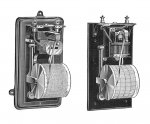Mr. Spinosa
Member
- Location
- Tacoma, Washington, USA
I am a licensed commercial electrician and I am working on getting my administrator's license. I would like to know from another professional how they might go about finding out whether or not another motor load might be installed in a commercial installation without recalculating the entire load for a building. - For example: A customer asks you to install a new motor conveyor and he shows you right where he wants it. Let's say there is a sub panel close by and you want to add it to that sub panel. - Is it really necessary to find every load attached to that sub panel and recalculate everything and make sure it all falls within code? How does a professional approach this? All or most of the work I have done while working for others has been engineered or "given to me" by my superiors. But as a small contractor I anticipate running into this type of scenario and I would like to see if I can get some input from another professional on the best way to approach this without making a big project out of a small one. - Any help is appreciated and thank you in advance.


